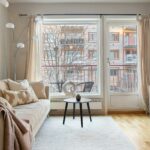Creating your enclosed garden world has never been more popular among design-conscious plant lovers. These glass-encased botanical displays offer the perfect blend of low-maintenance greenery and artistic expression, making them ideal for anyone wanting to bring nature indoors without the fuss of traditional gardening.
Whether you’re a seasoned plant parent or just starting your journey with indoor plants, crafting these miniature ecosystems provides an accessible way to showcase your creativity while adding that coveted urban botanical aesthetic to your living space. The beauty lies in their versatility—you can create anything from a desert landscape to a lush tropical scene, all within the confines of a simple glass container.
This guide will walk you through everything you need to know about creating stunning glass garden displays that perfectly capture that effortlessly cool, plant-forward vibe. You’ll learn essential techniques, discover creative design ideas, and master the art of building these captivating miniature worlds that serve as both living art and conversation starters.
Essential Materials for Your Glass Garden Project
Before diving into your DIY decor adventure, gathering the right supplies ensures your project succeeds from the start. The foundation of any great enclosed garden begins with selecting the proper container and materials.
Choosing Your Glass Container
The vessel you select sets the tone for your entire creation. Wide-mouth glass bowls offer easy access for planting and maintenance, while tall cylindrical vases create dramatic vertical displays. Vintage apothecary jars add character and authenticity to your setup, perfectly matching that curated aesthetic you’re after.
Consider the opening size when making your selection. Containers with openings at least 4 inches wide allow comfortable hand access for arranging plants and decorative elements. Avoid containers with narrow necks unless you’re comfortable using long tweezers for precise placement.
Layering Materials That Matter
Proper drainage forms the backbone of healthy enclosed gardens. Start with a layer of small pebbles or aquarium gravel at the bottom, followed by activated charcoal to prevent odors and bacterial growth. A thin layer of moss acts as a natural filter between your drainage system and soil.
For the growing medium, choose a high-quality potting mix appropriate for your selected plants. Succulent and cactus blends work best for desert-themed displays, while standard potting soil supports tropical plants and ferns.
Plant Selection for Maximum Impact
Choosing the right indoor plants makes the difference between a thriving miniature ecosystem and a disappointing failure. Focus on species that remain small, grow slowly, and thrive in humid environments.
Low-Light Champions
Snake plants, pothos, and small ferns excel in enclosed environments with limited direct sunlight. These hardy options forgive beginners’ mistakes while providing lush greenery that photographs beautifully for social media sharing.
Moss varieties add texture and that wild, untamed look that defines contemporary plant styling. Sheet moss, cushion moss, and fern moss each offer different visual textures while requiring minimal care.
Statement Makers
Air plants create stunning focal points without requiring soil, making them perfect for creative arrangements. These sculptural beauties come in various shapes and sizes, from spiky varieties to soft, flowing forms that add movement to your display.
Small succulents like jade plants, echeveria, and haworthia provide architectural interest with their geometric forms and varied colors. Mix different textures and heights for visual depth that draws the eye through your composition.
Step-by-Step Assembly Process
Creating your enclosed garden follows a methodical approach that ensures both beauty and functionality. Taking time with each step prevents common mistakes that lead to plant failure.
Building Your Foundation
Begin by cleaning your glass container thoroughly with soap and water, then dry it completely. Add your drainage layer first—about one inch of pebbles or gravel provides adequate water management for most containers.
Sprinkle activated charcoal over the drainage layer, using approximately one tablespoon per cup of drainage material. This natural filter keeps your enclosed environment fresh and prevents the musty odors that can develop in humid conditions.
Creating Visual Interest
Layer your growing medium to create hills and valleys rather than maintaining a flat surface. This topographical variation adds visual depth and allows for creative plant placement at different heights.
Before adding plants, arrange your decorative elements like small stones, driftwood pieces, or miniature figurines. These accents should complement rather than overwhelm your botanical selections.
Plant Placement Strategy
Start with your largest plant as the focal point, typically positioned slightly off-center for a natural-looking composition. Gradually add smaller plants around this anchor, considering how they’ll look from multiple viewing angles.
Use a spoon or small trowel to create planting holes, gently removing plants from their original containers and loosening roots before placement. Firm soil gently around each plant without compacting it heavily.
Design Themes That Capture Urban Cool
Different aesthetic approaches allow you to express your style while creating Instagram-worthy displays that reflect current design trends.
Minimalist Desert Landscapes
Clean lines and carefully curated plant selections define this approach. Combine geometric succulents with neutral-colored sand and smooth river rocks for a zen-like quality that complements modern interiors.
Focus on negative space as much as plant placement. This restraint creates sophisticated displays that feel intentional rather than cluttered, perfectly matching contemporary design sensibilities.
Lush Tropical Escapes
Layer multiple shades of green through various fern species, small palms, and trailing plants for density and richness. Add natural elements like bark pieces or interesting stones to enhance the wild, jungle-like atmosphere.
This style embraces abundance while maintaining careful color coordination. The result feels like discovering a secret garden world within your living space.
Maintenance Made Simple
Successful enclosed gardens require understanding rather than constant intervention. These self-contained ecosystems largely manage themselves when properly established.
Watering Wisdom
Most enclosed gardens need water only every 2-3 weeks, and overwatering causes more problems than underwatering. The glass walls create humidity that reduces water loss, so less is more.
Watch for condensation patterns inside your container. Light fogging indicates proper moisture levels, while heavy condensation suggests too much water. If condensation becomes excessive, remove the lid temporarily to allow evaporation.
Pruning and Grooming
Trim plants regularly to maintain size and shape, preventing any single species from dominating your carefully planned composition. Remove dead or yellowing leaves immediately to prevent decay that could affect other plants.
Rotate your container periodically so all sides receive equal light exposure, promoting even growth and preventing plants from leaning toward light sources.
Troubleshooting Common Challenges
Even well-planned projects encounter occasional issues. Understanding solutions keeps your miniature ecosystem thriving long-term.
Dealing with Condensation Problems
Excessive moisture buildup indicates poor air circulation or overwatering. Crack the lid slightly or remove it entirely for a few hours to restore balance. Adding more activated charcoal to your next project prevents this issue.
Managing Plant Growth
Some species grow faster than anticipated, disrupting your original design. Regular pruning controls size, but don’t hesitate to replace plants that consistently outgrow their space with more appropriate varieties.
Elevate Your Green Game
Creating stunning enclosed gardens combines artistic expression with botanical knowledge, resulting in living art pieces that evolve. These miniature ecosystems offer endless possibilities for customization while providing the satisfaction of nurturing something beautiful.
The skills you develop through this DIY decor project extend beyond single containers. Apply these techniques to larger installations, seasonal displays, or gifts for fellow plant enthusiasts. Each creation becomes a unique reflection of your style and growing expertise with indoor plants.
Start your first terrarium craft project with simple materials and hardy plants, then experiment with more complex designs as your confidence grows. Your space will thank you for the added life and character these green installations provide.







